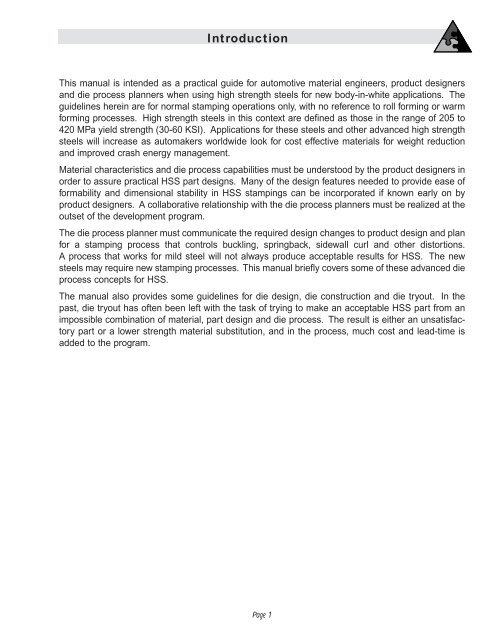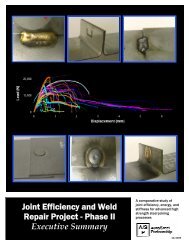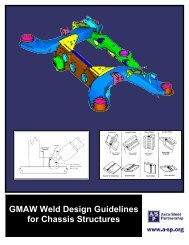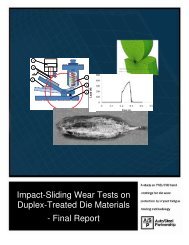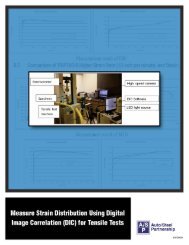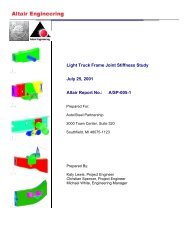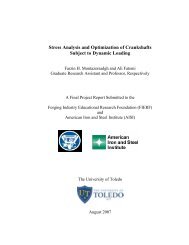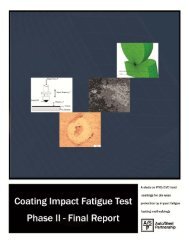High Strength Steel Stamping Design Manual - Auto/Steel Partnership
High Strength Steel Stamping Design Manual - Auto/Steel Partnership
High Strength Steel Stamping Design Manual - Auto/Steel Partnership
You also want an ePaper? Increase the reach of your titles
YUMPU automatically turns print PDFs into web optimized ePapers that Google loves.
Introduction<br />
This manual is intended as a practical guide for automotive material engineers, product designers<br />
and die process planners when using high strength steels for new body-in-white applications. The<br />
guidelines herein are for normal stamping operations only, with no reference to roll forming or warm<br />
forming processes. <strong>High</strong> strength steels in this context are defined as those in the range of 205 to<br />
420 MPa yield strength (30-60 KSI). Applications for these steels and other advanced high strength<br />
steels will increase as automakers worldwide look for cost effective materials for weight reduction<br />
and improved crash energy management.<br />
Material characteristics and die process capabilities must be understood by the product designers in<br />
order to assure practical HSS part designs. Many of the design features needed to provide ease of<br />
formability and dimensional stability in HSS stampings can be incorporated if known early on by<br />
product designers. A collaborative relationship with the die process planners must be realized at the<br />
outset of the development program.<br />
The die process planner must communicate the required design changes to product design and plan<br />
for a stamping process that controls buckling, springback, sidewall curl and other distortions.<br />
A process that works for mild steel will not always produce acceptable results for HSS. The new<br />
steels may require new stamping processes. This manual briefly covers some of these advanced die<br />
process concepts for HSS.<br />
The manual also provides some guidelines for die design, die construction and die tryout. In the<br />
past, die tryout has often been left with the task of trying to make an acceptable HSS part from an<br />
impossible combination of material, part design and die process. The result is either an unsatisfactory<br />
part or a lower strength material substitution, and in the process, much cost and lead-time is<br />
added to the program.<br />
Page 1


